Interested in knowing about Horse Price in India? If yes this article is for you.
Horses have been an integral part of Indian culture for centuries. They were originally used for transportation and military purposes, but today they are also used for recreation and sport.
Owning a horse in India can be a rewarding experience, but it is important to be prepared for the challenges that come with it.
The cost of buying and maintaining a horse in India can be high. Horses need to be fed a balanced diet and given regular exercise. They also require regular vet check-ups and vaccinations. All of this can add up to a significant financial investment.
Alright, enough with the Cit Chat, now let’s get down to the business:
Horse Price In India
Depending on the breed, a horse in India can cost anywhere from Rs.10,000 to Rs.6,00,000. You can buy one horse for an average of Rs.80,000, although the price can vary greatly and for certain breeds, the price could go as high as Rs. 20,00,000 or even more.
What Does Owning a Horse In India Actually Mean?
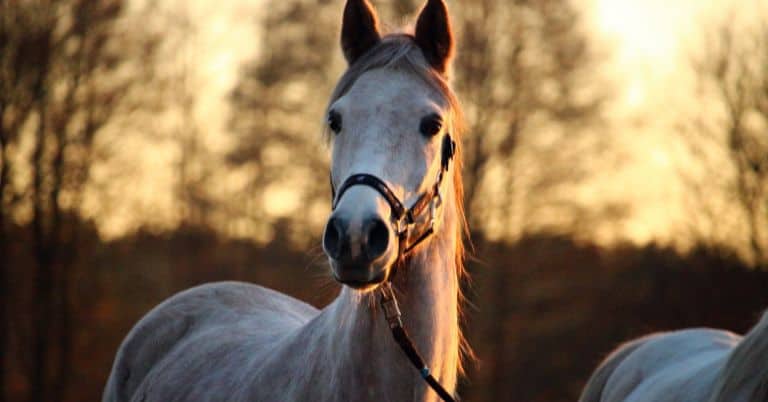
It’s indeed true that owning and maintaining a horse in India is not cheap at all.
So why are people so interested to know about the prices of horses?
There’s a good chance that one of your ancestors owned a horse once upon a time. My uncle has one and my great-grandfather used to have one as well.
Owning a horse can be a great way to feel what your ancestors used to feel, to get the nostalgic vibe, or for some people to get that royal feeling a horse is a must. Many people believe that owning a horse is a status symbol which could be true in some cases but most people buy horses in India out of true love for the animal and for their culture.
Some Factors Affecting Horse Price In India
Below are some of the factors that affect the Horse Price In India:
1. Age
The number one factor that affects horse prices in India is age. Young horses are typically worth more than older ones because they have more potential and are less likely to have health problems. That being said, a well-trained and experienced older horse can still be worth a lot of money.
2. Breed
The breed is another important factor when it comes to horse prices in India. Some breeds, such as Marwari Horse, and Kathiawari, are worth more than others. The reason for this is that they are considered to be more desirable and more promising.
3. Gender
Gender also plays a role in horse prices in India. Stallions, or male horses, are often worth more than mares, or female horses. This is due to the fact that stallions can be utilized for breeding, which is a highly profitable industry.
4. Training and experience
A horse that is well-trained and has a lot of experience is also going to be worth more than one that doesn’t. This is because a trained horse is more likely to be successful in whatever discipline it is being used for.
5. Health
Of course, a horse’s health is also a major factor in its price in India. A horse that is healthy and has no known health problems is going to be worth more than one that isn’t. This is because a healthy horse has a better chance of living a long life and giving its best performance.
6. Competition experience
Horses that have competed in shows or races are also typically worth more than those that haven’t. The reason this is because their experience gives them an edge over other horses that might not have competed before.
7. Pedigree
A horse’s pedigree can also affect its price. If a horse comes from a long line of successful racehorses or showjumpers, it is going to be worth more than one without such a pedigree. Simply because its pedigree indicates that it has the potential to be successful in its chosen discipline.
8. Location
The location where a horse is being sold can also affect its price. Horses that are being sold in Rajasthan are typically worth more than those being sold in other states. Mainly because in Rajasthan there is a major market for horses, and there is a high demand for them as well.
9. Seller
The seller of a horse can also affect its price. If a horse is being sold by a well-known breeder or trainer, it is likely to be worth more than one being sold by a private individual. This is because the seller’s reputation can add to the value of the horse.
10. Buyer
Finally, the buyer of a horse can also affect its price. If a horse is being bought by a wealthy individual or a famous person, it is likely to be worth more than one being bought by a private individual. This is because the buyer’s wealth or status can add to the value of the horse.
10 Most Popular Horse Breeds In India
Below are some of the most popular horse breeds in India:
1. Bhutia Horse
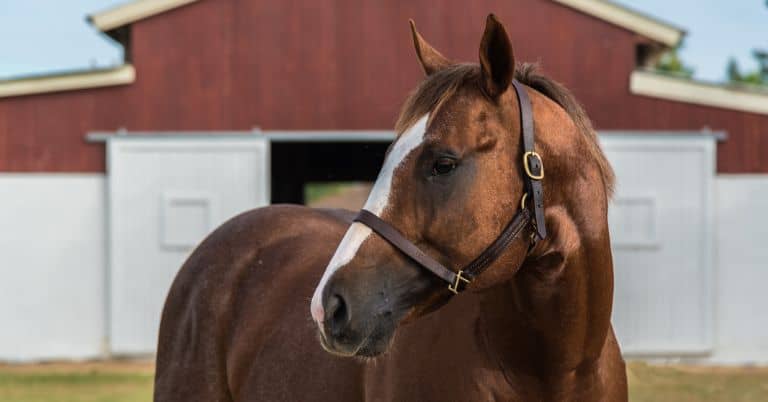
The Bhutia horse is a sure-footed and hardy breed of horse native to the mountainous regions of Sikkim and Bhutan.
These horses are best known for their ability to cover great distances over difficult terrain and are often used as pack animals in the Himalayan region. The Bhutia is small to a medium-sized horse, standing between 13 and 15 hands high.
They are usually chestnut or bay in color, with a thick mane and tail. Bhutias are known for their docile and even-tempered nature and are often used as riding and trekking horses.
2. Marwari Horse
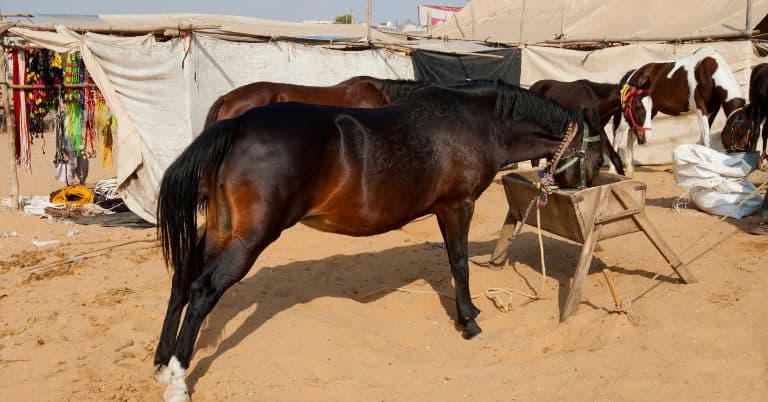
The Marwari horse is native to the Marwar region of Rajasthan, India. These horses are best known for their distinctive inward-turning ear tips, which give them an alert and intelligent appearance.
Marwari horses are medium-sized, standing between 14 and 16 hands high. They come in a variety of colors but are most often chestnut, bay, or black. The Marwari is a hardy breed, capable of withstanding harsh conditions and difficult terrain. They are also known for their courage and loyalty and have been used in warfare for centuries.
3. Kathiawari Horse
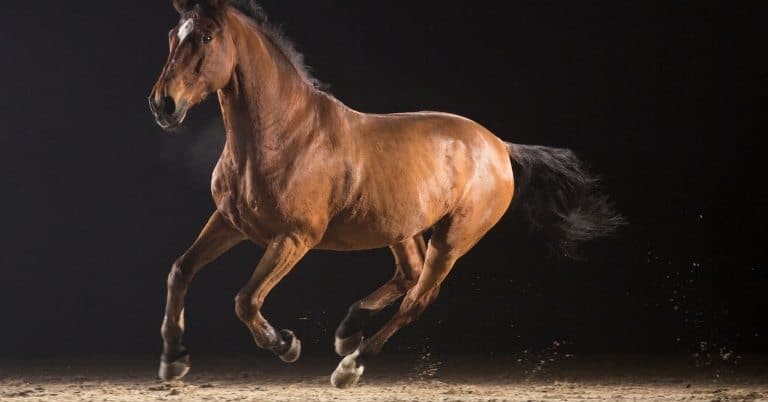
The Kathiawari is an Indian horse breed from the Kathiawar Peninsula in Gujarat. The breed is also found in Pakistan. The Kathiawari is a light horse, standing between 14 and 15 hands (56 and 60 inches, 142 and 152 cm).
The head is finely shaped with a straight or slightly convex profile, and the eyes are large and expressive. The ears are medium in size and well-set. The neck is medium in length and well-arched.
The body is compact and well-proportioned, with strong, sloping shoulders and a deep, well-sprung chest. The legs are strong and straight, with good bone and hard, dry hooves.
Kathiawari Horse is an intelligent and versatile breed, known for its courage, endurance, and sure-footedness. It is used for riding, racing, and working cattle. The breed is also popular as a show horse and can be a great family pet.
4. Spiti Horse
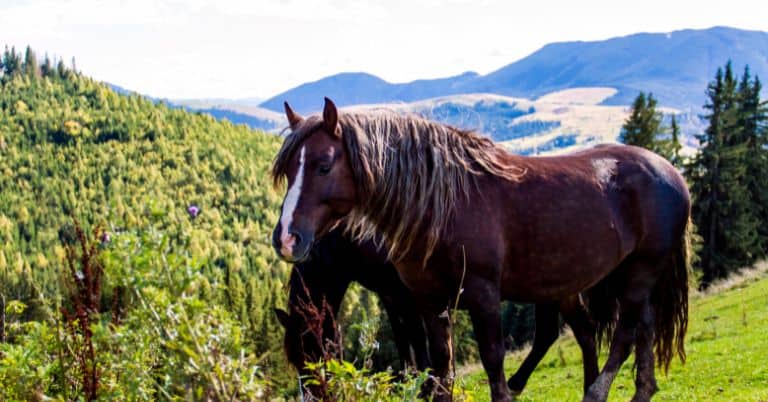
The Spiti Horse is a sure-footed, hardy breed of horse that is native to the Spiti Valley in the Himalayan mountains of India.
The Spiti Horse is adapted to the harsh, high-altitude environment in which it lives. It is a small horse but is very strong for its size. The Spiti Horse is used by the local people for transportation and as a pack animal. For a rural area, they can be a good pet choice.
5. Zanskari Horse
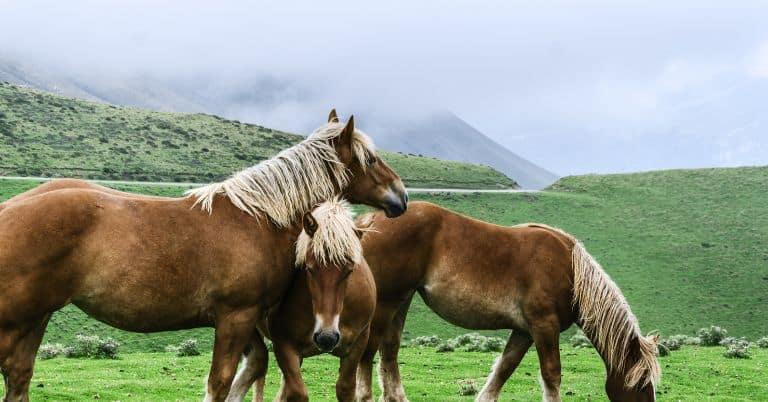
The Zanskari horse is a hardy, sure-footed breed from the mountainous Zanskar region of India. Though not as large as some other Indian breeds, the Zanskari is well-muscled and has great stamina, making it an ideal mount for the region’s steep, rocky terrain. Zanskari horses are also known for their calm dispositions and are often used as pack animals as well as for riding.
The Zanskari breed is thought to be descended from Tibetan ponies brought to India by Tibetan traders centuries ago. Today, the breed is still used for transportation in the Zanskar region, as well as for trekking and other adventure tourism activities. With their sure feet and steady tempers, Zanskari horses are well-suited to the challenges of life in the mountains.
6. Kachchhi-Sindhi Horse
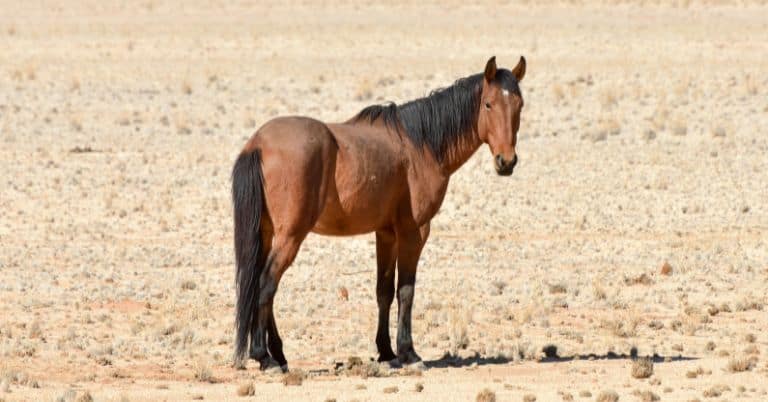
The Kachchhi-Sindhi horse is native to the Kachchh and Sindh regions of Pakistan. The breed is also known as the Sindh-Kutchi horse.
The breed is thought to be descended from the now-extinct Turkoman horse. The Kachchhi-Sindhi horse is small to medium-sized horse, with a compact body and short legs.
7. Chummarti Horse
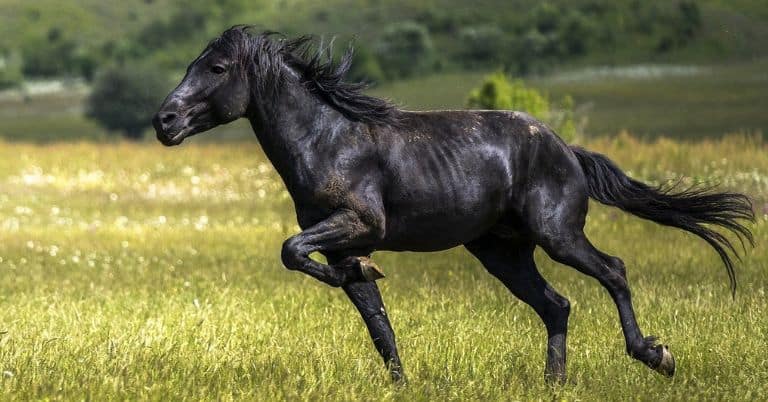
Chummarti Horses are a rare breed of horses found in Manipur, India.
The breed is known for its hardiness and ability to adapt to different climates. The Chummarti Horse is also known for its calm temperament and intelligence.
They are a versatile and popular breed that is sure to continue to be a valuable asset to the people of India for many years to come which makes them an ideal choice for someone looking to pet a horse in India.
8. Bhimthadi Horse
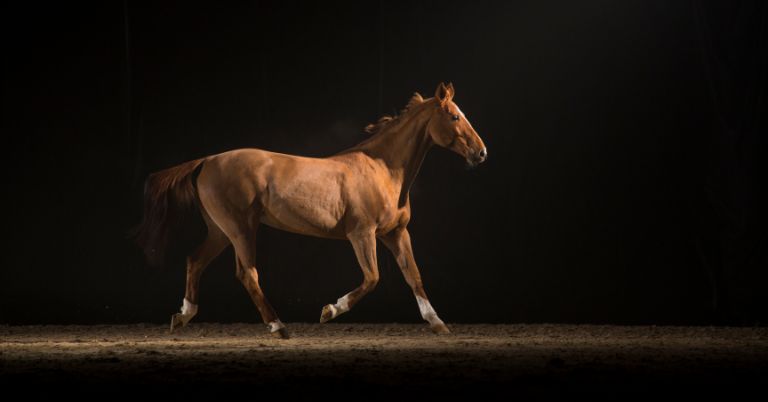
The Bhimthadi horse is a strong and hardy breed of horse mainly found in Maharashtra, India. The breed is known for its ability to work in hot and humid conditions and is used for a variety of purposes including agriculture, transportation, as well as racing.
The Bhimthadi horse is a medium-sized breed, with a compact body and short legs. The breed is known for its sure-footedness and stamina and is considered to be one of the best working horses in India.
9. Sikang Horse
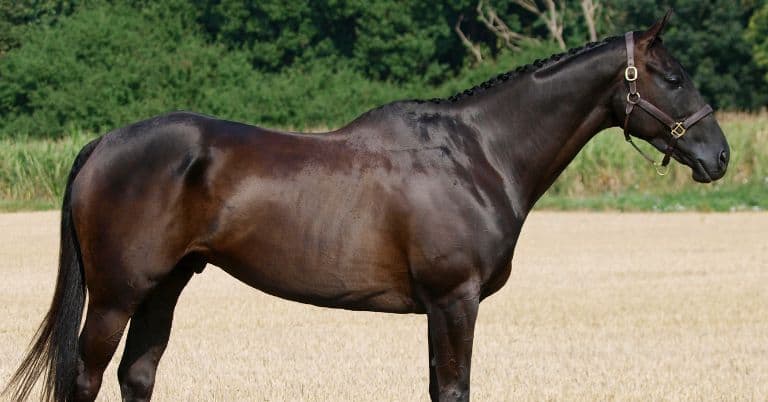
The Sikang horse is a sturdy, medium-sized horse indigenous to the Tibetan plateau. It is hardy and sure-footed, making it ideal for mountainous terrain.
The Sikang horse has a thick coat that helps protect it from the cold, harsh weather of the Tibetan plateau. It is also known for its good temperament and is used in a variety of roles, including transportation, and agriculture, and hence it is popular with farmers.
10. Indian Half Bred Horse
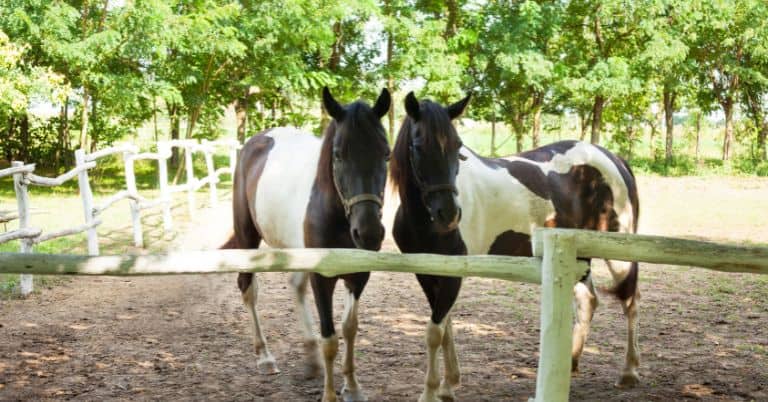
The Indian Half Bred was developed from cross-breeding Thoroughbred stallions with local and imported mares. The aim was to create a horse that was hardy and could withstand the harsh conditions of the Indian subcontinent, while also being able to be used for cavalry purposes.
The result was a horse that was strong, agile, and intelligent, with a good temperament. The Indian Half Bred Horse quickly became popular with the British military. Today, the breed is still used by the Indian Army and is also popular in racing and showjumping.
Things You Need to Know Before Purchasing A Horse In India
Owning a horse is a dream for many people, and in India, it is no different. There are a number of reasons why people in India may want to own a horse, such as for transportation, pleasure, or status. Whatever the reason, there are a few things to consider before making the purchase.
1. The first thing to consider is the climate.
India is a tropical country, which can make it difficult to keep a horse healthy and comfortable. The heat and humidity can cause a horse to become dehydrated and stressed, so it is important to make sure that there is access to plenty of water and shade. It is also important to have good quality hay and grain to feed the horse.
2. The second thing to consider is the terrain.
India has a variety of terrain, from the mountains in the north to the beaches in the south. This variety can be a good thing for a horse, as it can help to keep them healthy and fit. However, it is important to make sure that the horse will have a comfortable place to live and that the terrain is not too rough for them.
3. The third thing to consider is the cost.
Horses are not cheap, and in India, they can be even more expensive. The cost of buying a horse, feeding it, and caring for it can be quite high.
Conclusion!
Now that you know the horse price in India, I have a few final words to share with you. Owning a horse is a big responsibility, but it can also be a lot of fun. If you do your research and take the time to consider all of the factors, you will be able to find the perfect horse for you and your family.
However, it is important to be aware of the challenges that come with it. If you are prepared for the financial and time commitment required, owning a horse can be a rewarding experience.
There is also a lot of work involved in caring for a horse. Horses need to be groomed daily and their hooves need to be trimmed and cleaned regularly. They also need to be exercised regularly to stay healthy and fit.
